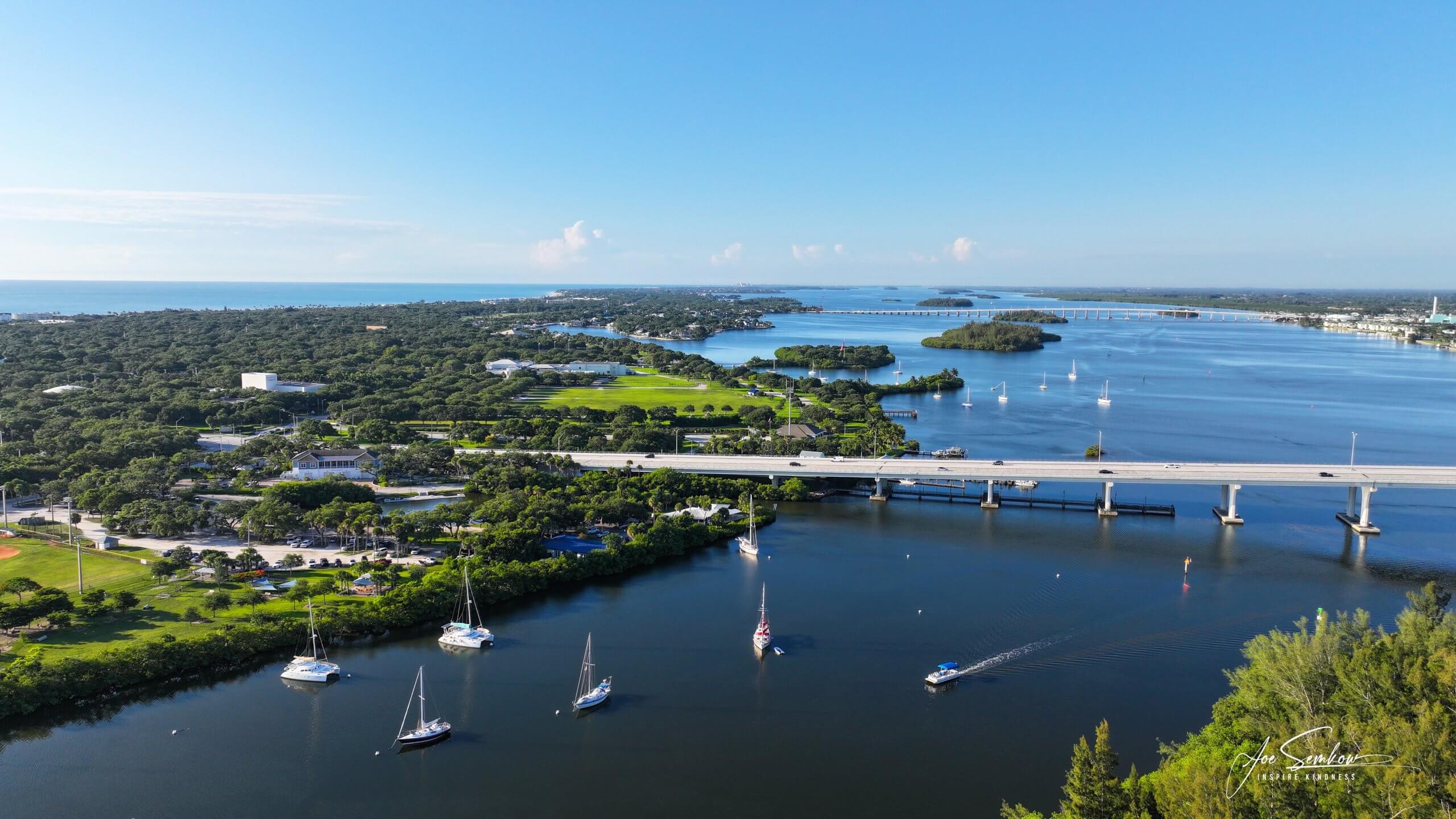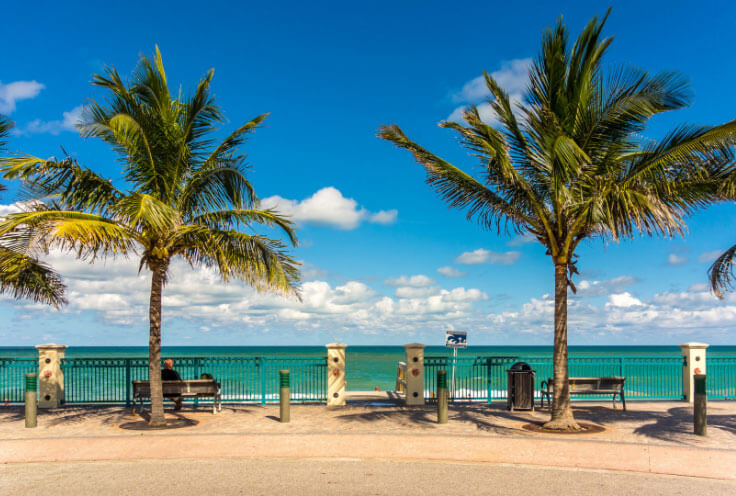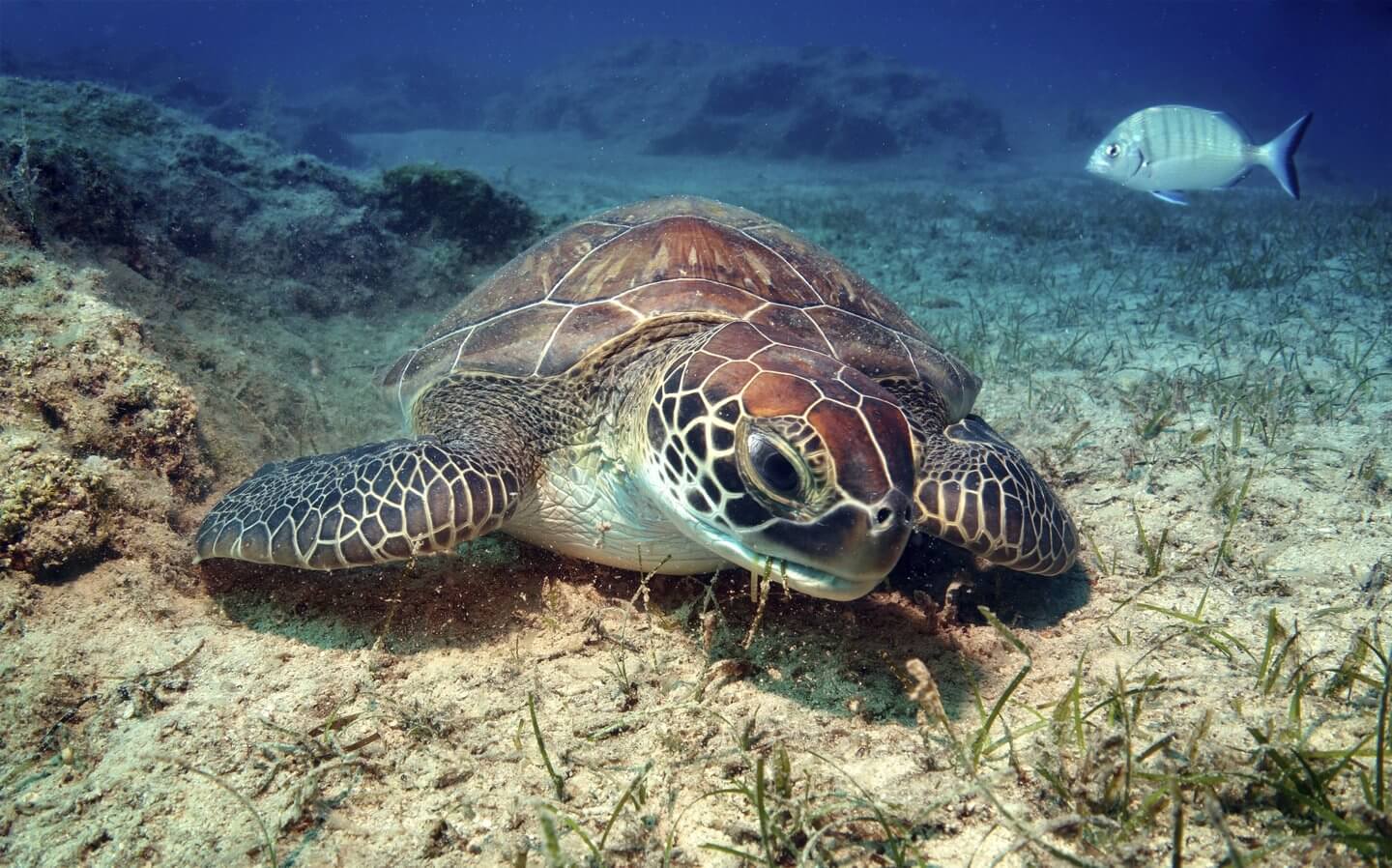Return to Nature and Turtles in Indian River County
Return to Nature and Turtles in Indian River County
A record number of Loggerhead Turtles in 5 Years
Join a Coastal Clean-Up or Turtle Dig
A responsible return to nature in Indian River County means a healthy return of turtles during nesting season now through July. The area’s open spaces and pristine beaches allow for ample room to roam unencumbered – for people or for turtles.
Beachgoers here can expect 26 miles of well-preserved waterfront, home to boundless wildlife. More than 100,000 acres of pristine, protected Florida wilderness accompanies the shores, lagoons, Atlantic Intracoastal Waterway, rivers, and lakes of Vero Beach, Sebastian, and Fellsmere offering a multitude of unexpected eco-excursions. A most notable eco venue is America’s first National Wildlife Refuge, Pelican Island, in Sebastian.
In Indian River County, turtles are coming back to the nest in record numbers, thanks to plentiful nature and improved sustainability practices, according to Coastal Connections, a 501 (c) 3 local nonprofit focusing on sea turtle conservation and plastic-reduction best practices.
Kendra Cope, the organization’s outfit’s President, says this is a great time to come back to enjoy Indian River County’s beaches and beauty responsibly – and help. You can sign up in advance on their website or simply show up to volunteer at an upcoming coastal clean-up. Starting in July, make plans to attend their highly popular and free “Turtle Digs,” where you can observe a hatched nest evaluation and possibly a release of a hatchling that was left by its brothers and sisters even help rescue and rehabilitate hatchlings.
“Turtles love coming to our pristine beaches, and we think our conservation efforts are paying off,” said Ms. Cope. For the last several years, Coastal Connections has worked with the Indian River County officials and businesses to encourage local sustainability practicing, and coastal nature conservation, by increasing recycling and minimizing the use of single-use plastics. A business that achieves these goals is named a Vero Goes Zero business. The organization is even seeking funds to help support local small businesses by supplying them with plastic alternatives for a full month or more to help reduce financial stress from COVID impacts and help ease the transition to more sustainable and environmentally friendly business practices.
Many of the area’s “turtle-friendly” hotels and restaurants, including Costa d’Este Beach Resort & Spa and Kimpton Vero Beach Hotel & Spa, have joined in the spirit of sustainability and turtle conservation, ensuring they meet higher standards and pass inspections during the nesting season to ensure lights are compliant with local lighting codes, avoid illuminating the beaches, or removing nesting obstructions from the beaches at night, and overall acting like an ambassador for best practices.
“Turtles are one of the many great reasons to explore our unique, nature-filled beach destination,” said Kirk Funnell, Director of Tourism & Marketing at Indian River County Tourism. “The difference starts with our focused commitment to preserving the area’s inherent beauty. Here you will not see towering hotels or large restaurant chains but rather a peaceful place where sea turtles roam and the sun shines all day.”
Here are only a few of the sustainable places you can visit in Indian River County:
- Archie Carr National Wildlife Refuge covers long stretches of quiet, sandy beaches in the northern part of Indian River County. The refuge provides little artificial light — this is essential to the reproductive success and survival of the 15,000 to 20,000 sea turtles nesting annually. The refuge, birthed to protect sea turtle habitats in the Western Hemisphere, is a significant area for loggerhead and green turtle nesting. This area represents 25-35% of all loggerhead and green sea turtle nests in the U.S. One of the world’s largest and most rare sea turtles, the leatherback, also nests within the refuge. Visitors to Vero Beach can access the refuge at Golden Sand County Park. A variety of sea turtle talks and walks, and exclusive “turtle digs” are offered to visitors during nesting season. Cozily nestled on the east coast of the Florida Peninsula near Vero Beach, Sebastian is a lesser-known gem of the Florida Treasure Coast. With its fishing village history – Sebastian emerged as a small fishing village in the late 1890’— it offers visitors an “old South” hometown ambiance and laid-back lifestyle; yet it’s also convenient to the metropolitan accouterments of Orlando and West Palm Beach. In Sebastian, you won’t find traffic jams, congestion or over-development. You’ll find high quality of life at a reasonable price point, and as the city’s self-effacing slogan promises “friendly people and six old grouches.” Sebastian is also home to “Pelican Island,” America’s first National Wildlife Refuge, designated by President Theodore Roosevelt in 1903. Pelican Island is located in the Indian River Lagoon, with the wider Pelican Island National Wildlife Refuge extending out from the island encompassing around 5,400 acres of protected waters and lands. Boat and kayak tours are offered by local operators. But note: because nesting birds are easily disturbed, visitors are not allowed to get too close or to disembark. Blue Cypress Lake, part of the Blue Cypress Conservation Area in Fellsmere, is a magnificent body of water roughly seven miles long and three miles wide, with 21 miles of shoreline wrapped in 29,000 acres of marshes, swamps and cypress forests. The lake is one of the top osprey nesting sites in Florida. A kayak trip promises magical moments, including up-close views of osprey nests and cypress trees up to 130 feet tall. Middleton’s Fish Camp provides eco-tours and fishing. Take an airboat ride with Capt. Lawrence. Sebastian Inlet State Park provides fishing from both its Atlantic Ocean and Indian River Shores, and fishing jetties extend from both sides of the inlet into the ocean. Other activities include swimming, enjoying the water views, camping, bird watching, and treasure diving. Wildlife is also abundant in the park, which offers more than 22,000 acres of backwoods to explore via horseback, bike, or hiking on dedicated trails, where eagle-eyed visitors can spy ospreys, egrets, herons among the many species of shorebirds. Sea turtles also nest in the park, and during the summer reservations can be made for nighttime tours to observe nesting turtles. Sebastian Inlet Park also contains two museums: the Sebastian Fishing Museum which tells the history of the area’s fishing industry; and Mel Fisher’s Treasure Museum, named after the renowned treasure hunter. This homey museum and gift shop located on the Indian River contains a theater, dioramas, photos, dive site maps, and lots and lots of treasure and artifacts pulled from Spanish shipwrecks of the 17th Century. From gold coins and silver bars to candlesticks and rosary beads, this attraction offers a lively look back into a particularly swashbuckling period of Florida history and explains why the area is today known as Florida’s Treasure Coast. 322 US Hwy 1, Sebastian, (772) 589-9875.
- Archie Carr National Wildlife Refuge covers long stretches of quiet, sandy beaches in the northern part of Indian River County. The refuge provides little artificial light — this is essential to the reproductive success and survival of the 15,000 to 20,000 sea turtles nesting annually. The refuge, birthed to protect sea turtle habitats in the Western Hemisphere, is a significant area for loggerhead and green turtle nesting. This area represents 25-35% of all loggerhead and green sea turtle nests in the U.S. One of the world’s largest and most rare sea turtles, the leatherback, also nests within the refuge. Visitors to Vero Beach can access the refuge at Golden Sand County Park. A variety of sea turtle talks and walks, and exclusive “turtle digs” are offered to visitors during nesting season. Cozily nestled on the east coast of the Florida Peninsula near Vero Beach, Sebastian is a lesser-known gem of the Florida Treasure Coast. With its fishing village history – Sebastian emerged as a small fishing village in the late 1890’— it offers visitors an “old South” hometown ambiance and laid-back lifestyle; yet it’s also convenient to the metropolitan accouterments of Orlando and West Palm Beach. In Sebastian, you won’t find traffic jams, congestion or over-development. You’ll find high quality of life at a reasonable price point, and as the city’s self-effacing slogan promises “friendly people and six old grouches.” Sebastian is also home to “Pelican Island,” America’s first National Wildlife Refuge, designated by President Theodore Roosevelt in 1903. Pelican Island is located in the Indian River Lagoon, with the wider Pelican Island National Wildlife Refuge extending out from the island encompassing around 5,400 acres of protected waters and lands. Boat and kayak tours are offered by local operators. But note: because nesting birds are easily disturbed, visitors are not allowed to get too close or to disembark. Blue Cypress Lake, part of the Blue Cypress Conservation Area in Fellsmere, is a magnificent body of water roughly seven miles long and three miles wide, with 21 miles of shoreline wrapped in 29,000 acres of marshes, swamps and cypress forests. The lake is one of the top osprey nesting sites in Florida. A kayak trip promises magical moments, including up-close views of osprey nests and cypress trees up to 130 feet tall. Middleton’s Fish Camp provides eco-tours and fishing. Take an airboat ride with Capt. Lawrence. Sebastian Inlet State Park provides fishing from both its Atlantic Ocean and Indian River Shores, and fishing jetties extend from both sides of the inlet into the ocean. Other activities include swimming, enjoying the water views, camping, bird watching, and treasure diving. Wildlife is also abundant in the park, which offers more than 22,000 acres of backwoods to explore via horseback, bike, or hiking on dedicated trails, where eagle-eyed visitors can spy ospreys, egrets, herons among the many species of shorebirds. Sea turtles also nest in the park, and during the summer reservations can be made for nighttime tours to observe nesting turtles. Sebastian Inlet Park also contains two museums: the Sebastian Fishing Museum which tells the history of the area’s fishing industry; and Mel Fisher’s Treasure Museum, named after the renowned treasure hunter. This homey museum and gift shop located on the Indian River contains a theater, dioramas, photos, dive site maps, and lots and lots of treasure and artifacts pulled from Spanish shipwrecks of the 17th Century. From gold coins and silver bars to candlesticks and rosary beads, this attraction offers a lively look back into a particularly swashbuckling period of Florida history and explains why the area is today known as Florida’s Treasure Coast. 322 US Hwy 1, Sebastian, (772) 589-9875.
- Archie Carr National Wildlife Refuge covers long stretches of quiet, sandy beaches in the northern part of Indian River County. The refuge provides little artificial light — this is essential to the reproductive success and survival of the 15,000 to 20,000 sea turtles nesting annually. The refuge, birthed to protect sea turtle habitats in the Western Hemisphere, is a significant area for loggerhead and green turtle nesting. This area represents 25-35% of all loggerhead and green sea turtle nests in the U.S. One of the world’s largest and most rare sea turtles, the leatherback, also nests within the refuge. Visitors to Vero Beach can access the refuge at Golden Sand County Park. A variety of sea turtle talks and walks, and exclusive “turtle digs” are offered to visitors during nesting season. Cozily nestled on the east coast of the Florida Peninsula near Vero Beach, Sebastian is a lesser-known gem of the Florida Treasure Coast. With its fishing village history – Sebastian emerged as a small fishing village in the late 1890’— it offers visitors an “old South” hometown ambiance and laid-back lifestyle; yet it’s also convenient to the metropolitan accouterments of Orlando and West Palm Beach. In Sebastian, you won’t find traffic jams, congestion or over-development. You’ll find high quality of life at a reasonable price point, and as the city’s self-effacing slogan promises “friendly people and six old grouches.” Sebastian is also home to “Pelican Island,” America’s first National Wildlife Refuge, designated by President Theodore Roosevelt in 1903. Pelican Island is located in the Indian River Lagoon, with the wider Pelican Island National Wildlife Refuge extending out from the island encompassing around 5,400 acres of protected waters and lands. Boat and kayak tours are offered by local operators. But note: because nesting birds are easily disturbed, visitors are not allowed to get too close or to disembark. Blue Cypress Lake, part of the Blue Cypress Conservation Area in Fellsmere, is a magnificent body of water roughly seven miles long and three miles wide, with 21 miles of shoreline wrapped in 29,000 acres of marshes, swamps and cypress forests. The lake is one of the top osprey nesting sites in Florida. A kayak trip promises magical moments, including up-close views of osprey nests and cypress trees up to 130 feet tall. Middleton’s Fish Camp provides eco-tours and fishing. Take an airboat ride with Capt. Lawrence. Sebastian Inlet State Park provides fishing from both its Atlantic Ocean and Indian River Shores, and fishing jetties extend from both sides of the inlet into the ocean. Other activities include swimming, enjoying the water views, camping, bird watching, and treasure diving. Wildlife is also abundant in the park, which offers more than 22,000 acres of backwoods to explore via horseback, bike, or hiking on dedicated trails, where eagle-eyed visitors can spy ospreys, egrets, herons among the many species of shorebirds. Sea turtles also nest in the park, and during the summer reservations can be made for nighttime tours to observe nesting turtles. Sebastian Inlet Park also contains two museums: the Sebastian Fishing Museum which tells the history of the area’s fishing industry; and Mel Fisher’s Treasure Museum, named after the renowned treasure hunter. This homey museum and gift shop located on the Indian River contains a theater, dioramas, photos, dive site maps, and lots and lots of treasure and artifacts pulled from Spanish shipwrecks of the 17th Century. From gold coins and silver bars to candlesticks and rosary beads, this attraction offers a lively look back into a particularly swashbuckling period of Florida history and explains why the area is today known as Florida’s Treasure Coast. 322 US Hwy 1, Sebastian, (772) 589-9875.
- Archie Carr National Wildlife Refuge covers long stretches of quiet, sandy beaches in the northern part of Indian River County. The refuge provides little artificial light — this is essential to the reproductive success and survival of the 15,000 to 20,000 sea turtles nesting annually. The refuge, birthed to protect sea turtle habitats in the Western Hemisphere, is a significant area for loggerhead and green turtle nesting. This area represents 25-35% of all loggerhead and green sea turtle nests in the U.S. One of the world’s largest and most rare sea turtles, the leatherback, also nests within the refuge. Visitors to Vero Beach can access the refuge at Golden Sand County Park. A variety of sea turtle talks and walks, and exclusive “turtle digs” are offered to visitors during nesting season. Cozily nestled on the east coast of the Florida Peninsula near Vero Beach, Sebastian is a lesser-known gem of the Florida Treasure Coast. With its fishing village history – Sebastian emerged as a small fishing village in the late 1890’— it offers visitors an “old South” hometown ambiance and laid-back lifestyle; yet it’s also convenient to the metropolitan accouterments of Orlando and West Palm Beach. In Sebastian, you won’t find traffic jams, congestion or over-development. You’ll find high quality of life at a reasonable price point, and as the city’s self-effacing slogan promises “friendly people and six old grouches.” Sebastian is also home to “Pelican Island,” America’s first National Wildlife Refuge, designated by President Theodore Roosevelt in 1903. Pelican Island is located in the Indian River Lagoon, with the wider Pelican Island National Wildlife Refuge extending out from the island encompassing around 5,400 acres of protected waters and lands. Boat and kayak tours are offered by local operators. But note: because nesting birds are easily disturbed, visitors are not allowed to get too close or to disembark. Blue Cypress Lake, part of the Blue Cypress Conservation Area in Fellsmere, is a magnificent body of water roughly seven miles long and three miles wide, with 21 miles of shoreline wrapped in 29,000 acres of marshes, swamps and cypress forests. The lake is one of the top osprey nesting sites in Florida. A kayak trip promises magical moments, including up-close views of osprey nests and cypress trees up to 130 feet tall. Middleton’s Fish Camp provides eco-tours and fishing. Take an airboat ride with Capt. Lawrence. Sebastian Inlet State Park provides fishing from both its Atlantic Ocean and Indian River Shores, and fishing jetties extend from both sides of the inlet into the ocean. Other activities include swimming, enjoying the water views, camping, bird watching, and treasure diving. Wildlife is also abundant in the park, which offers more than 22,000 acres of backwoods to explore via horseback, bike, or hiking on dedicated trails, where eagle-eyed visitors can spy ospreys, egrets, herons among the many species of shorebirds. Sea turtles also nest in the park, and during the summer reservations can be made for nighttime tours to observe nesting turtles. Sebastian Inlet Park also contains two museums: the Sebastian Fishing Museum which tells the history of the area’s fishing industry; and Mel Fisher’s Treasure Museum, named after the renowned treasure hunter. This homey museum and gift shop located on the Indian River contains a theater, dioramas, photos, dive site maps, and lots and lots of treasure and artifacts pulled from Spanish shipwrecks of the 17th Century. From gold coins and silver bars to candlesticks and rosary beads, this attraction offers a lively look back into a particularly swashbuckling period of Florida history and explains why the area is today known as Florida’s Treasure Coast. 322 US Hwy 1, Sebastian, (772) 589-9875.




